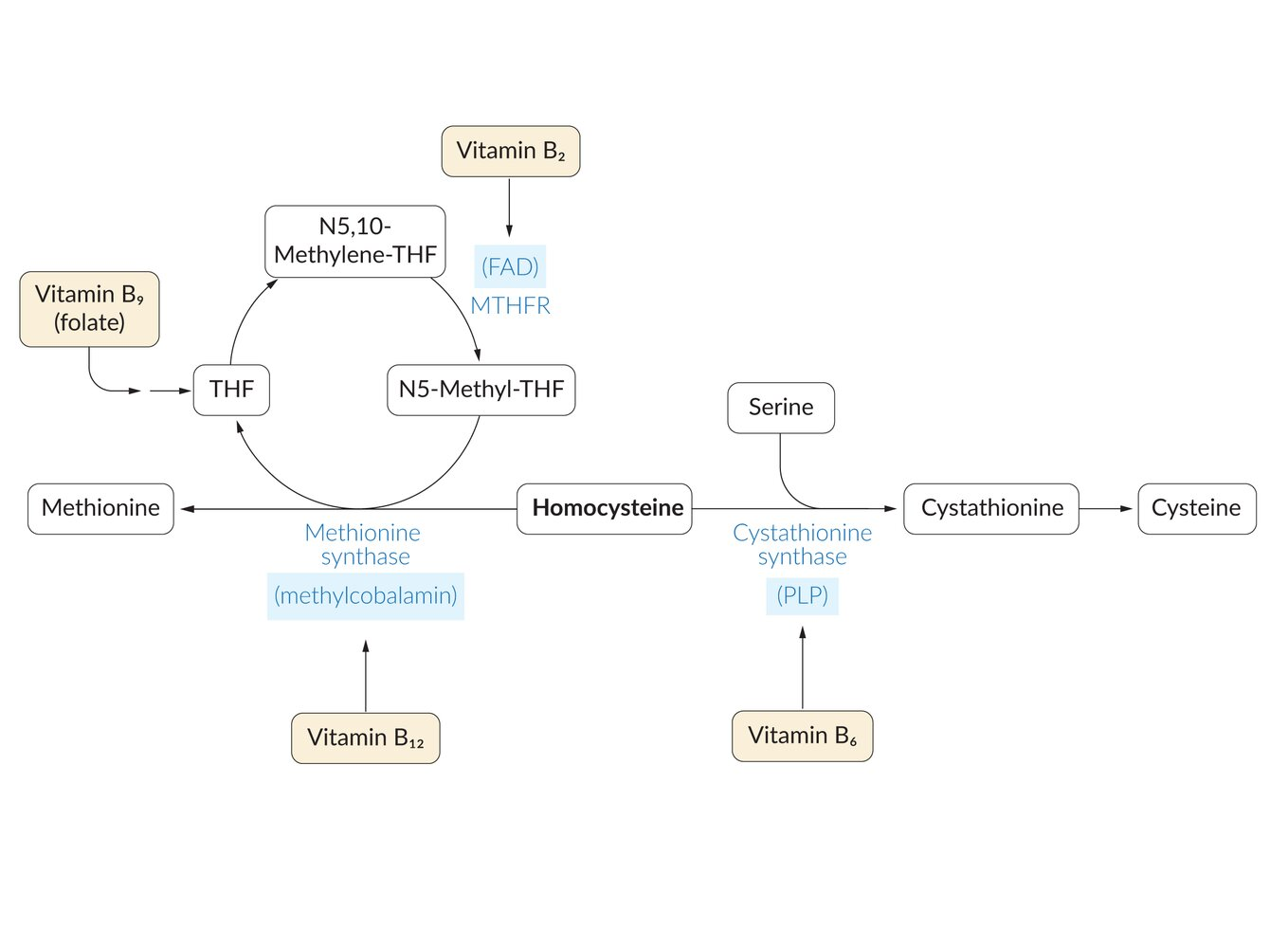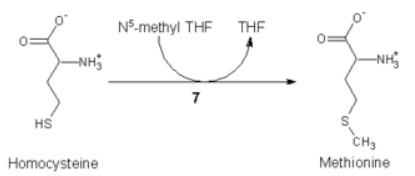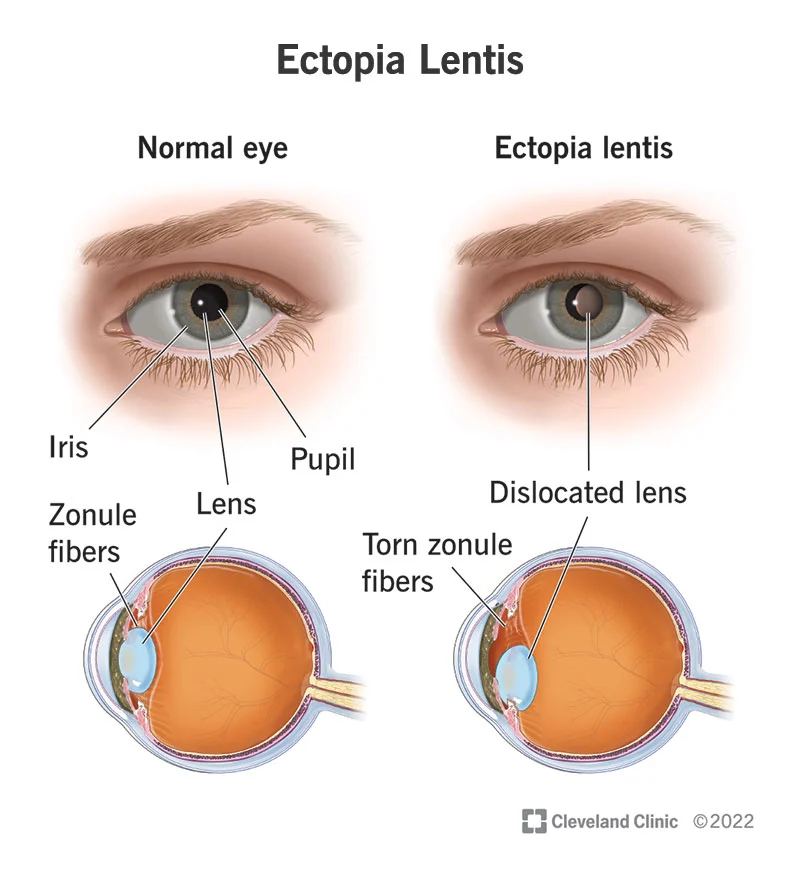Definition: a group of inherited genetic disorders characterized by impaired homocysteine metabolism
Folate Cycle and Methionine Cycle



Folate cycle
- (Folic acid to THF, see Folic acid pathway)
- THF (empty carrier)
- THF picks up a methylene group (from serine, glycine, etc.) → forms 5,10-methylene THF (has a “methylene” group bridging the N5 and N10 positions of the THF molecule.)
- 5,10-methylene THF is reduced to 5-methyl THF (now with a methyl group at one site)
- 5-methyl THF gives its methyl group to homocysteine (with vitamin B12 as a cofactor), creating methionine
- THF (now “empty” again) is regenerated and the cycle restarts
Functions
Folate Cycle
- Supports DNA synthesis and repair (via dTMP and purine production, see De novo pyrimidine and purine synthesis)
- Enables methyl group transfer to regenerate methionine (links to methionine cycle)
- Facilitates serine/glycine interconversion (amino acid metabolism)
- Essential for cell growth, division, and genomic stability
Methionine Cycle
- Produces S-adenosylmethionine (SAM), the primary methyl group donor for methylation reactions (DNA, proteins, neurotransmitters, etc.)
- Regenerates methionine from homocysteine, preventing homocysteine toxicity
- Connects to the folate cycle (requires folate-derived methyl groups for homocysteine remethylation)
- Feeds the transsulfuration pathway for cysteine and glutathione synthesis
- Supports synthesis of polyamines, creatine, and phosphatidylcholine via methyltransfer reactions
Epidemiology
Etiology
- Autosomal recessive
- Cause deficiencies in one or more of the following enzymes
- Methionine synthase
- Cystathionine synthase: an enzyme that catalyzes the conversion of homocysteine and serine to cystathionine, using vitamin B6 as a cofactor.
- Methylenetetrahydrofolate reductase (MTHFR): an enzyme involved in folate metabolism that reduces N5,10-methylenetetrahydrofolate to methyltetrahydrofolate.
- Impaired affinity of cystathionine synthase for pyridoxal phosphate
Pathophysiology
- Methionine synthase (homocysteine methyltransferase) deficiency → impaired conversion of homocysteine into methionine
- Cystathionine synthase deficiency → impaired conversion of homocysteine into cystathionine
- All forms result in the accumulation of homocysteine.
Clinical features
- Nonspecific features in infancy: growth faltering, developmental delay
- Eyes
- Downward and inward subluxation of the ocular lens (ectopia lentis) after 3 years of age (in Marfan syndrome, the lens usually luxates upwards and outwards)

- Myopia and glaucoma later in life
- Downward and inward subluxation of the ocular lens (ectopia lentis) after 3 years of age (in Marfan syndrome, the lens usually luxates upwards and outwards)
- Progressive intellectual disability
- Psychiatric and behavioral disorders
- Light skin
- Marfanoid features
- Tall, thin
- Pectus deformities (e.g., pectus excavatum)
- Scoliosis
- Elongated limbs (↑ arm:height ratio; ↓ upper:lower body segment ratio), arachnodactyly
- Hyperlaxity of joints and hyperelasticity of the skin
Tip
Marfan syndrome and homocystinuria both present with marfanoid habitus. Distinguishing features include intellectual disability, which is only seen in homocystinuria, and the direction of lens dislocation (downwards in homocystinuria and upwards in Marfan syndrome).
- Osteoporosis
- Cardiovascular complications like thromboembolism, premature arteriosclerosis, and coronary heart disease increase the risk of myocardial infarction and stroke
Diagnostics
- ↑ Homocysteine in urine and serum
- Urine sodium nitroprusside test: Urine changes color to an intense red in the presence of homocysteine.
- Serum methionine levels
- Increased in cystathionine synthase deficiency
- Decreased in methionine synthase deficiency and methylenetetrahydrofolate reductase deficiency
Treatment
- Some patients respond to large doses of pyridoxine (vitamin B6).
- Methionine synthase deficiency: high-methionine diet
- Cystathionine synthase deficiency
- Low-methionine, high-cysteine diet
- Supplementation of vitamin B12 and folate
- Impaired affinity of cystathionine synthase for pyridoxal phosphate: high-cysteine diet
- MTHFR deficiency: supplementation of folate